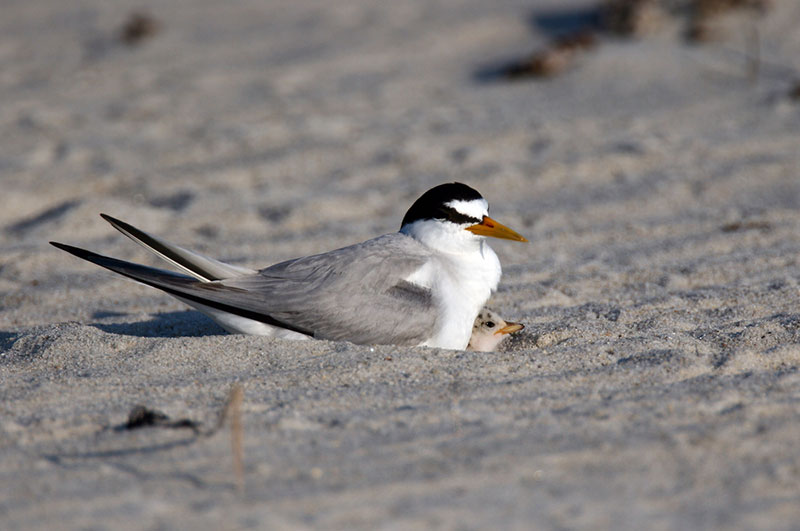Expert Q&A: Brian Manwaring
By Amy Nelson
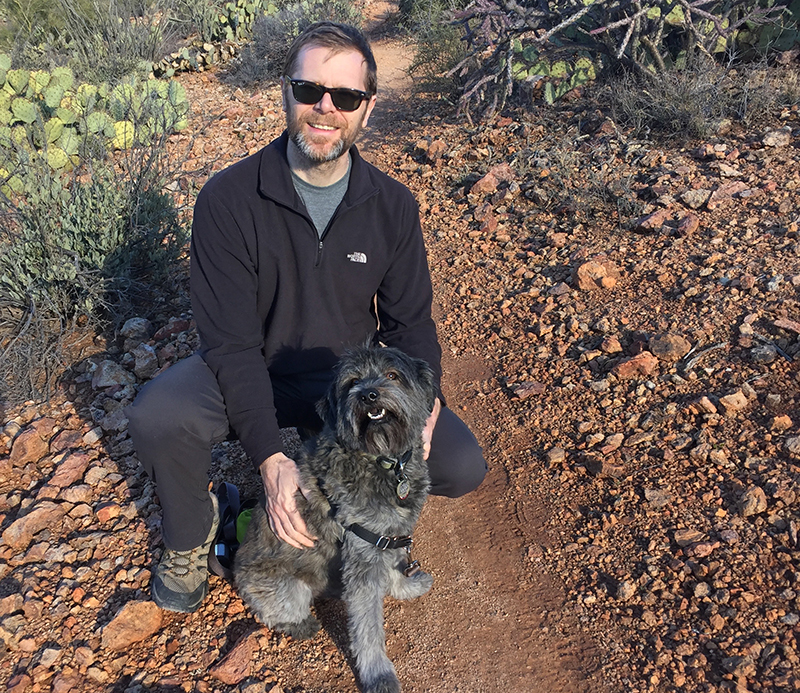
Brian Manwaring is the Director of the Morris K. Udall and Stewart L. Udall Foundation’s John S. McCain III National Center for Environmental Conflict Resolution. He has two decades of facilitation, mediation, decision analysis, conflict assessment, collaborative support, and public involvement experience with fresh water, ocean/coastal, public lands, energy, transportation, and other issues for two decades. Brian’s focus has been on large, complex, and challenging collaborative processes, particularly in the water resources arena. Prior to joining the National Center, Brian consulted at an environmental engineering firm, CH2M Hill, for five years. In addition, he was an organizational development consultant for more than six years, working in the nonprofit and technology sectors. Brian earned his Master of Arts in Conflict Resolution, with a focus on environmental policy, from the University of Denver. He has a B.S. in Management Science/Decision Support Systems from Virginia Tech. Brian served as a past co-chair for the Association for Conflict Resolution Environment and Public Policy Section.
You have studied conflict resolution and applied it to a variety of arenas, including management consulting. How does environmental conflict resolution and multi-stakeholder consensus building differ from this type of work in management consulting?
As a management consultant, I was working within an organization to problem solve and resolve conflicts between departments. Here at the National Center for Environmental Conflict Resolution, most of our work involves addressing issues that occur between various federal agencies or between agencies and stakeholders, including tribes and other groups. The dynamics of the work can be very similar, but the substance is completely different, and working across organizational boundaries is different as well. Ultimately, within an organization there is a place where the buck stops. Conflicts and issues can always be elevated within that organization to a place where someone can resolve it or make a decision. In environmental collaboration and conflict resolution, that kind of backstop doesn’t always exist, unless the courts are involved or there is one primary decision making agency or organization. The goal of our work is to support and help these groups come to a wise outcome that the parties can agree upon. The threshold of consensus can certainly make environmental conflict resolution more challenging than intra-organizational work at times.
What does the National Center for Environmental Conflict Resolution set out to do, and who does it help? Can anyone struggling with an environmental conflict access and benefit from its resources?
The National Center is a program of the Morris K. Udall and Stewart L. Udall Foundation. The Udall Foundation is a federal agency, of which we are one of several programs. The National Center was created in 1998 by the United States Congress. Our mandate, as conveyed in our enabling at legislation, is to enhance collaboration and resolve disputes on environmental, public policy, and natural resource issues.

Our work must involve some sort of federal issue or interest. To do that, we work to support all the parties at the table in a collaborative process. That can include federal agencies, state and local government agencies, Native Nations, as well as private stakeholders and the public. We provide a range of services, anywhere from assessing conflict, to convening collaborative processes, to providing facilitation or mediation services. We also work to build collaborative capacity within the federal government and among its partners through a training program that focuses on developing communication and conflict resolution skills. The training courses are open to anyone.
Many practitioners of ecological restoration and conservation encounter some form of conflict in their work, but it may not involve a federal agency or regulation. Does the National Center provide resources to help folks like that, or is it strictly with cases involving some element of the federal government?
We work on issues that do have some sort of federal interest, and that can be defined pretty broadly. We do have cases where there are no federal agency representatives sitting at the table, but in those cases, the parties are working on a substantive topic that runs parallel to or connects with some federal interest. If anyone has a question or concern about whether we could work on a particular initiative, its best just to speak with us. We have a good understanding of the work and we will provide some upfront consulting support to talk through an issue and brainstorm possible options.
What do you consider to be the state of the practice, and how has it changed in recent years from when you first got involved?
The field is still relatively new. Most people feel that the approaches and the practices that we utilize in environmental collaboration and conflict resolution (ECCR) really coalesced into a field around 40 or 50 years ago. Many practitioners who I see as mentors are considered some of the founders of this field and are still active today.
The field has changed quite a bit over the last 20 years since I first became involved. First, there’s been a consistently increasing acknowledgement among scientists, policymakers, educators, project managers, and others, that there is value in this work and these practices. Much of that has been through observed successes. We are also getting a better understanding of the impact of the work through the data, which shows that these processes, when employed well and in the right circumstances can increase efficiency, improve outcomes and relationships, and ultimately result in better environmental governance. A good resource for this data is a report entitled “Environmental Collaboration and Conflict Resolution Enhancing Agency Efficiency and Making Government Accountable to the People.” The report, which can be found on the Council for Environmental Quality’s website, is essentially a roll-up of 10 years of data and information about how these processes have worked in the federal government.
The evolution of the field can also be attributed to the increase in knowledge and skill with respect to collaboration and conflict resolution among staff at various agencies and within the environmental field as a whole. This, in part, can be attributed to the increase in resources that are available to students and professionals. Many universities now offer graduate degrees and certificates in conflict resolution. There are also many training avenues available to environmental professionals. Our training program at the National Center offers courses that support collaboration, communication, and conflict resolution skill building, and we also have focused trainings on topics such as collaboration in the National Environmental Policy Act (NEPA) process and collaboration with Native Nations and Tribal Consultation. These kinds of skill building activities ultimately allow this work to become institutionalized within organizations and broaden the collaborative mindset within environmental decision-making processes.
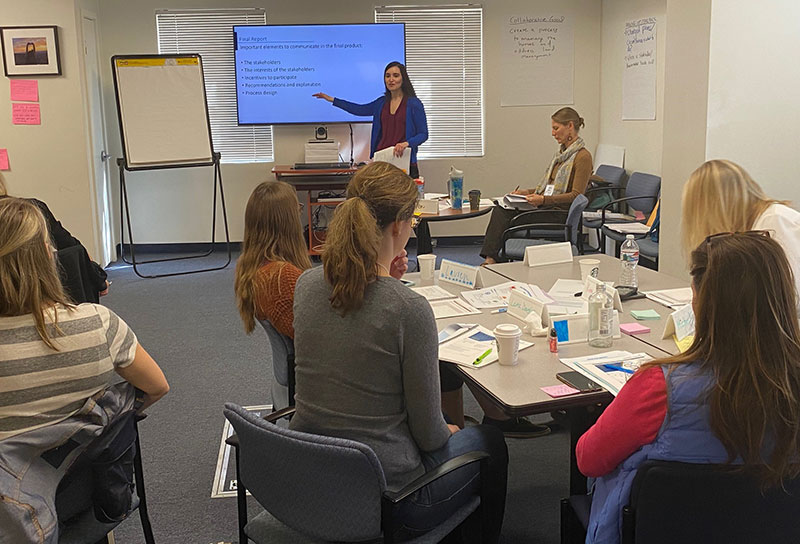
What about the tools themselves? Have you seen any interesting evolution in terms of the tools that you employ in the practice?
As might be expected, the evolution in technology has led to changes in virtual meeting tools and approaches, as well as the tools that are used to support broad stakeholder and public engagement. With respect to in-person, dialogue-based tools, I’m less convinced that there’s been a significant change over the past few decades. I think we’re continuing to learn, so any advancement might be more related to the application of the tools. And, certainly, the context in which we work continues to evolve. So, we continue to advance our understanding of the situations in which the tools work, and how they work. That understanding is critical.
You have addressed a wide variety of environmental issues in your work. Is there one particular area you consider to be the most fraught with conflict?
Broadly speaking, there is an increased potential for conflict as our shared environment, natural resources, and public lands are increasingly stressed by growing populations and competing interests. Many of the issues are interconnected, so it’s hard to pull out just one area in a very complex environment. The National Center has worked on over 600 projects on any variety of topics, and while I don’t think I could look across and pick out one specific issue, I would say there are some trends.
A lot of our activity involves public lands where a confined geographic area is managed for a variety different uses and competing interests. Geographically, much of our work is out West, which has a strong correlation to public lands in the U.S.. Substantively, water is a hot topic. The fact that it is a true need that cannot be done without tends to incentivize multi-party collaborative endeavors. Then, again, water is a highly complex, interconnected topic. When we look at water, that could potentially refer to the water energy nexus, endangered species, invasive species, agriculture, navigation, recreation, water supply for communities, ecosystem health, or a host of other issues. Any of these could be hot button issues, and could also be in direct conflict with a host of other interests and needs. This is where inclusion becomes important, and why we often work to cast a wide net to include a broad set of stakeholders in a collaborative process. With the interconnected nature of these issues, it’s important to look at all potential impacts and to assess outcomes that benefit a variety of interests.
“Trust is absolutely critical in our work.”
The National Center is, as you said, a program of a federal agency. How do you build trust and ensure neutrality?
Trust is absolutely critical in our work. And, in that vein, we’re strongly incentivized to adhere to our independence, impartiality, and neutrality. In our role as a neutral third party, our job is to work to understand and incorporate various beliefs and perspectives in the process we’re facilitating. It is critical that we create a space where people feel they can be meaningfully engaged and have a voice in the process. To uphold our neutral stance, we employ a number of tools. One approach that we use at the outset of a process is to communicate clearly with all parties–including the funding party–that we’re representing all stakeholders at the table. In fact, we go as far as to embed that principal in all of our funding agreements. Our staff at the National Center, and our contracted partners, are experienced neutral third parties. We work hard to act impartiality, and we are often in a position that we must uphold those principles in really difficult and challenging circumstances. In addition, the processes that we typically participate in and facilitate are voluntary. So, the parties have autonomy for how they work together, whether they choose to participate in the process, and who they choose to facilitate. Trust that the neutral third-party is acting in a manner that is supportive of all parties, as well as trust that each party is negotiating in good faith, is important to ensure that all stakeholders can find value in the process. And, we know that how we interact with a group and how we operate on a day-to-day basis has consequences, which further motivates us to stay true to our principles.
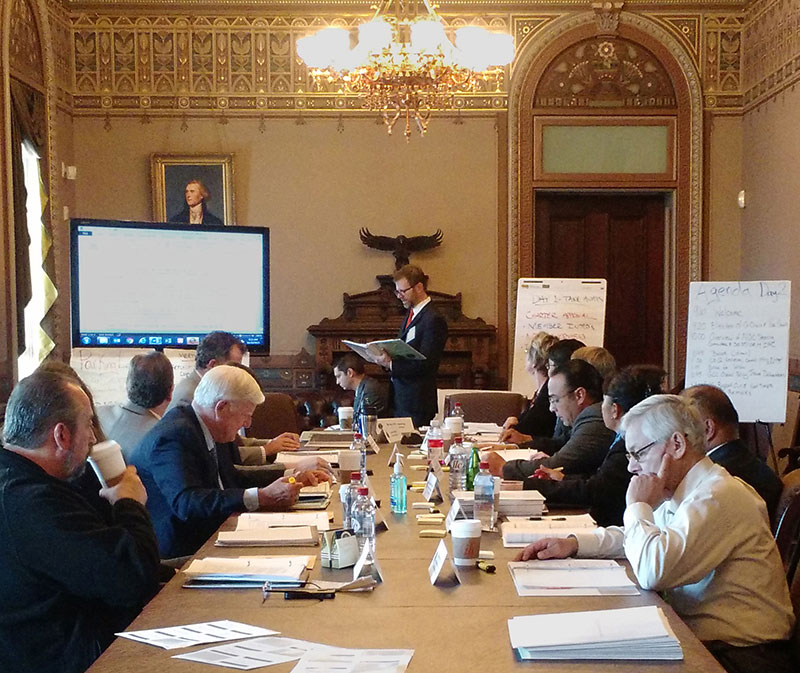
How do you decide whether your staff takes on the role of a mediator or if you outsource that?
There are several factors that we evaluate, including timing, location, availability of staff, and substantive expertise required, among others. There are pros and cons for either approach. Ultimately, we’ll do what’s best for the project. Our staff have experience and expertise across a range of issues, and we appreciate that we can extend our capacity and our range of expertise through the use of contracted neutral third parties.
In some circumstances, we will use a contracted third-party to provide an additional buffer between the funding party and the actions of that contractor. In a situation like that, we manage the contract with the mediator/facilitator. In high-conflict situations, this may help ensure that the stakeholders at the table feel that that process is being run in an impartial, balanced way.
I realize that every conflict, and the context of every conflict, is unique, but in general, do you employ some kind of standard model when you’re working to build consensus and resolve environmental conflict?
Our work has a typical flavor, and we abide by a common set of principles such as inclusivity, accountability, informed engagement, transparency, timeliness, openness, and group autonomy. That said, each situation is unique. The context of each situation can vary based on the type of issue, the stakeholders, historical relationships, political dynamics, legal dynamics, and so on. In almost any situation, we begin by assessing the situation. To do that, we speak with a broad set of stakeholders, usually in a confidential setting, and we explore their various interests, concerns, and needs. We then evaluate that information, work to summarize that information in an honest and supportive way, and report out our findings. If the potential exists, we will recommend a collaborative approach. Our intention is never to force a process when the timing isn’t right. In those cases, we’ll provide our best assessment, along with options or recommendations for a process so the parties can make a decision for themselves. From there, if the stars align, we’ll help convene and facilitate a collaborative process. After the assessment, our role is often to support the broad collaborative process which may include facilitative support for meetings and individual interactions. At the end of the day, it’s very hard to imagine any one process looking exactly like another.
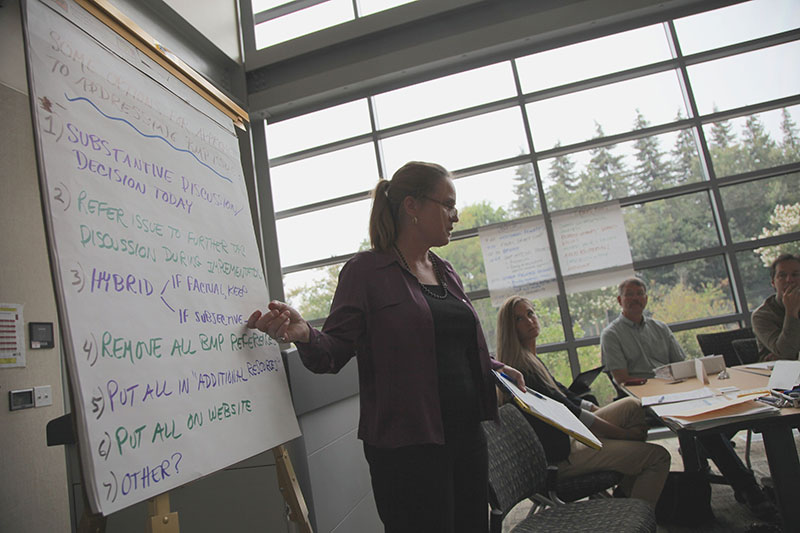
What is the key to creating a collaborative environment?
Given the complex nature of these kinds of situations, there is typically no silver bullet. One thing we look at is whether the parties are properly incentivized to participate in the collaborative process. For example, if one or more of the critical parties has other, feasible options, such as a legal or political processes that they think can be successful or come at a lower cost, then really there is no guarantee that a negotiated process will be successful.
We also look at the content and the substance of the issue, and we help the parties explore what type of negotiation space might exist. By negotiating space, I’m talking about the potential for the parties to come to agreement on one or more topics. We’ll examine past relationships and the importance that the parties place on maintaining those relationships moving forward. We’ll also explore any potential shortcomings or gaps that might prevent a successful process or a successful resolution. From there, we’ll assess the existing factors that could support a collaborative environment and the factors that need to be enhanced. Depending on the circumstances and the stakeholders sitting at the table, we may also explore the need for things like operating protocols, ground rules, or charters. I’ve worked in various circumstances where a very formal process and ground rules have been necessary, and then others where they’re not at all. We’ll also look at whether or not facilitated support is necessary. Typically, as contention over the issue grows, so does the need for some sort of third-party neutral support.
We’ll also assess the types of external support that parties may need in order to participate in the process. Some may need travel support, and some might not be able to provide the same amount of time and energy as others, so we’ll look at things like timing and locations of meetings. Our goal is to create a process that meets the needs of the parties and creates a collective space where progress can be made.
While there may not be any silver bullets, but are there any common landmines that can immediately derail a consensus-building process?
You can reverse everything I just said and turn it into a landmine. Is one party more politically connected and willing to use that political lever? Might one party be more willing to go a legal route than sit at the table? Are the right players at the table? Is the process inclusive enough but not overly complicated? All of these things can go one way or the other. That is why it is so important to properly assess the context and use that information to design a collaborative process that addresses the needs of the situation. I will always recommend taking the time to do the due diligence necessary to set up the process for success down the line.
I recently interviewed Francine Madden of the Center for Conservation Peacebuilding, who spoke of the deep historical and identity-based conflicts that often lie beneath a conflict involving wildlife conservation and people. Do you find those underlying conflicts in your work as well?
Certainly. There are many avenues for conflict to seep into a situation. Some common ones include differences over data, politics, organizational or structural issues, and relationships. Identity-based conflicts often include historical, psychological, and value-based differences, which can get sticky. Identify-based conflicts are traditionally the hardest kinds of issues to overcome and require going deeper to either address or transform. But the end goal may not always be to transform a relationship, so it is important to be honest and clear about where the root of the conflict really lies and to have a shared understanding about the appetite of the stakeholders to address each and every issue.
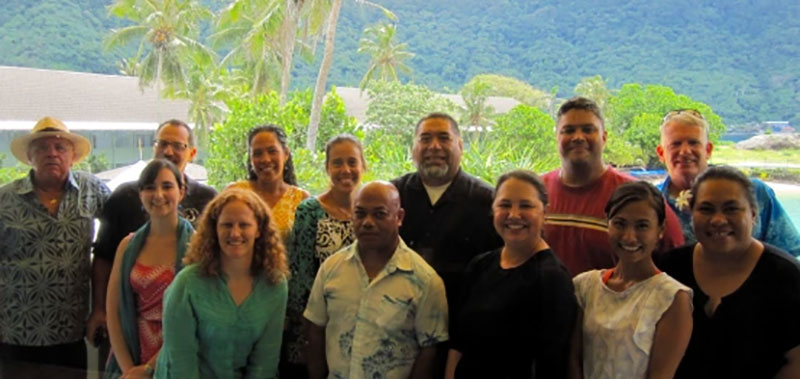
What is the role of science and the scientist in environmental conflict resolution?
Scientists play a variety of different and valuable roles in conflict resolution processes. The clearest role is that of negotiator. You don’t have to be a neutral third party or mediator to resolve a conflict. You can be a party at the table and your role in resolving a dispute can vitally important. In that role, it is critical to have the communication and reflection skills and the ability to engage in a collaborative way.
A slightly less direct role for the scientist is on the information side. Conflicts are often around data and the resolution process often needs good, trusted information. Providing or validating information and data can often be critical. A third potential role for scientists and technical staff is convening a collaborative process or serving as mediator or a facilitator. A lot of processes are self-convened and self-facilitated. Some of the best conflict resolvers I know have a technical background and are extremely effective at helping navigate multi-party processes.
I think that the vast majority of issues where multiple parties come to the table and need to coordinate and collaborate can be handled without the support of a neutral third party. Practitioners of conservation and ecological restoration are often the key to help resolve those issues. Most of that conflict is localized or discreet and so many of those issues can be handled in everyday interactions. Good communication and conflict resolution skills are really critical for anybody involved in conservation and restoration. I encourage anybody working on environment issues to enhance those skills. Around five years ago, I worked on a conflict involving a programmatic agreement between the U.S. Fish and Wildlife Service, the Federal Highway Administration, and a Department of Transportation, and they were just stuck. We worked through the issue with them. It was an incredibly successful process where not only was there an outcome that worked, but it felt transformative. The relationships did feel like they shifted quite a bit from the beginning to the end. Just a few months ago, they renegotiated that programmatic agreement without third-party support. So, it goes to show that it depends on the situation and where the parties and individuals are in their relationships and their abilities to work through issues together.
“Hands down, for us, the most effective method for earning trust is just doing good work”
One of the Center’s seven key service areas is Native American and Alaska Native Environmental Conflict Resolution. The Udall Foundation also runs the Native Nations Institute (NNI) for Leadership Management and Policy. Do those two program areas intersect? With conflict involving indigenous peoples, what have you found to be effective in earning the trust needed to do your work?
It important to note that the Udall Foundation does not run the Native Nations Institute (NNI). We have a statutory and fiscal relationship, and we partner on initiatives, but they are independently managed and operated. The National Center does have a Native American and Alaska Native service area, which is an incredibly important aspect of our work. The need for work and support to Native Nations is great. There are 574 federally recognized Native Nations in the United States. Our focus at the National Center is on environmental collaboration and conflict resolution, and NNI’s focus is on nation building and tribal governance issues. Those issues have some overlap, and that fuels a healthy partnership. But our work is often conducted separately.
Earning and building trust with Native Nations and indigenous communities is a long-term and ongoing process. Hands down, for us, the most effective method for earning trust is just doing good work: being authentic in our work and in our commitment to our practice and principles of collaboration and conflict resolution; maintaining our neutrality; and being honest and accountable with respect to who we are and what we can and can’t do. Everything we engage in is a voluntary process, so our everyday interactions are critical. How we show up in our work each and every day is probably the most important thing we do in earning that trust.
With the Native American related conflicts, I imagine there are additional layers of complexity, with issues related to sovereignty, sacred sites…
…yes, and environmental justice, traditional ecological knowledge, food security…those lists go on. The historical relationship, which is rooted in mistrust and resource inequality, adds another layer of complexity to that relationship. On the top of that, federal agencies are still working to improve their policies, procedures, and frameworks to consult and engage with tribes.
When the current U.S. administration makes a move like reducing the size of Bears Ears National Monument, does the rug get pulled out from under that trust you’ve taken so much time and care to build?
We are a program within a federal agency, and we can’t detach from that. Therefore, regardless of how we might act as individuals, the way we are perceived can be impacted by somebody’s perception of the federal government. I do, however, believe that we operate independently of politics, and we do our best to maintain that firewall between our work and whatever is happening out there in the political realm. And, at its core, our work is intended to support the relationship between the Federal government and Tribes. Ultimately, that trust is a very individual or group-held thing. It’s very possible that we might be trusted by one tribe or group and not by another. If that trust isn’t there, then we might help find a neutral party that is. But we do fall back on 20 years of experience and we hope that our performance and the way we’ve approached our work on hundreds of projects shines through any of the other stuff, and that we can be seen as a trusted partner.
Speaking of projects, the Center’s website showcases some very compelling project summaries. Could you share a personal anecdote about a project that you were involved in a long time ago and the impact that that’s had, to help demonstrate the impact of the work that you do?
The Missouri River Recovery Implementation Committee (MRRIC) is an incredible case study. It is one of the most significant collaborative efforts happening on water resources in the United States. The MRRIC has been around for over a decade, and it is special for a number of reasons. First, it’s size. It is a large group–close to 70 members. It consists of 15 different federal agencies, eight states, 17 Native American tribes, and 29 different stakeholder groups. A Congressionally authorized committee, MRRIC is responsible for providing input to the U.S. Army Corps of Engineers and the Fish and wildlife Service with respect Endangered Species Act compliance for three threatened and endangered species on the Missouri River [the piping plover, the interior least tern, and the pallid sturgeon]. The committee is exploring the relationship between water management operations on the Missouri River mainstem and the impacts to those species, while assessing impacts to other uses of the river and its resources.
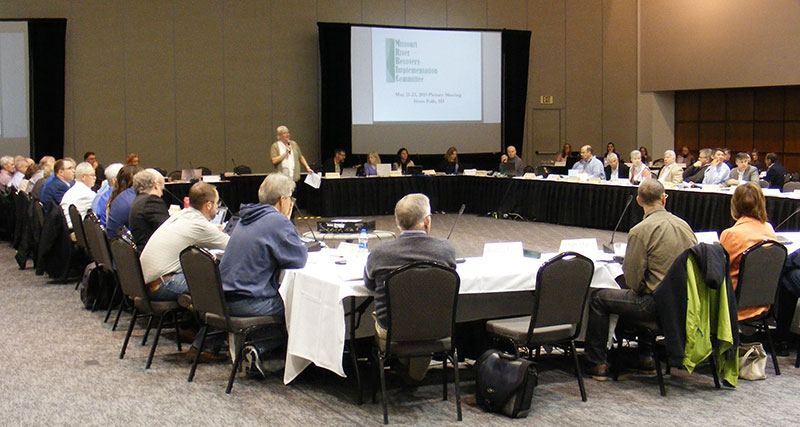
The geographic size of the MRRIC’s work is just massive, as the Missouri River drains about a sixth of the continental United States. The mainstem touches eight states, who are sitting at the table. The river is complex, and so are its various interest groups: navigation, agriculture, recreation, fish and wildlife, water supply, you name it. Any restoration and recovery actions have potentially significant economic, social, and cultural impacts.
The neutral third-party component includes a contracted team currently from RESOLVE handling the facilitation. We also contract with the chairperson of the committee, currently Gail Bingham of Civic Dialogue , and an independent science advisory panel currently through Oak Ridge Associated Universities.. The role of the Chair is to represent the MRRIC members as a whole and to support a broader understanding of the big picture of the committee and the substantive issues that they are addressing. The Chair also has a role in convening the meetings and keeping things on track. With respect to the independent science advisory panel, the committee will pose technical and scientific questions and then the team, whose members are typically academics from across the country, will get back with responses that help the MRRIC create recommendations to the Corps of Engineers and Fish and Wildlife Service.
MRRIC’s longevity, and the fact that after more than a decade it continues to operate and maintain interest among all of the stakeholders, is a testament to the importance of its work and how seriously it’s taken by the two lead agencies and the committee members.
One factor that helped its success was having clear objectives and a clear framing for what MRRIC was set out to do. The inclusion of such a variety of impacted stakeholders, Tribes, states, and federal agencies was also important. It also had strong agency commitment and consistent funding and resources. There is also a commitment and mechanism to implement the outcomes that come through the committee. The meetings are well designed and facilitated, which is important because these are heavy, four-day meetings that happen up to four times a year.
How are the interior least turn, piping plover, and pallid sturgeon doing along the Missouri today?
The MRRIC has now been in operation for over 10 years. They are now working to help implement the Missouri River Recovery Program’s Science and Adaptive Management Plan. The most significant success has been the proposed delisting of the interior least tern, which occurred in late 2019. The science to understand the life cycle and needs of the Piping Plover and the Palid Sturgeon is incomplete, and the adaptive management approach allows a continued look into the science while assessing management action impacts.
